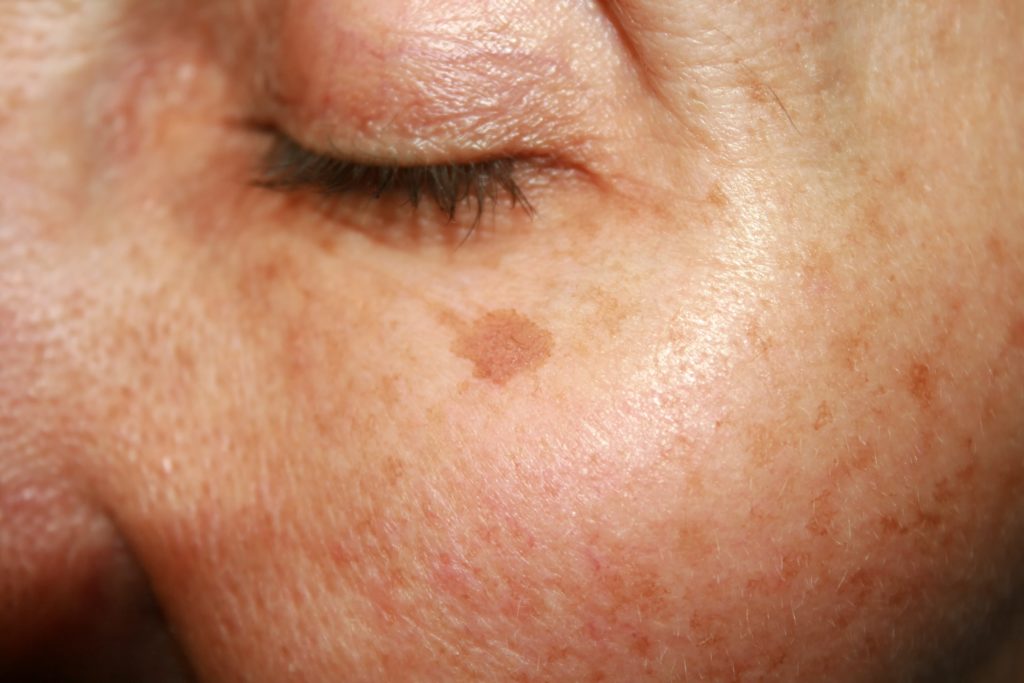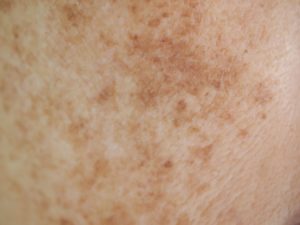Pigmentation
Pigmentation refers to the coloring of our skin, and melanin is the pigment responsible for producing the color in our skin, hair, and eyes. There are several skin conditions that can affect pigmentation such as age spots and sun damage, melasma, and vitiligo.
It is important to determine the root cause of pigmentation issues in order for us to provide the most effective treatment plan. Most conditions associated with pigmentation are harmless, however, things like age spots may make it harder for people to identify skin cancers or abnormalities and monitor changes on their skin. It’s important to discuss any skin concerns you have with us during your regular full body skin examination.
We offer a variety of cosmetic laser treatments, topical medications, and additional cosmetic procedures such as DiamondGlow (dermalinfusion), and Microneedling, that can help to correct uneven pigmentation. We also suggest medical grade products that specifically target age spots and sun damage, like SkinMedica Lytera 2.0.
Skin conditions associated with pigmentation issues:
Age Spots
Age spots, sometimes referred to as liver spots, are flat brown patches on the skin that have darkened in color after long term exposure to sunlight or ultraviolet light (tanning beds). Most commonly, we see age spots in patients over the age of 40, though younger people develop them as well. They develop on areas of skin that are frequently exposed to sunlight such as the hands, shoulders, forearms, face and forehead. While you may not like the way age spots look, age spots are harmless.
Sun Damage
Similar to age spots, sun damage can affect any area of your skin as a result of long-term repeated exposure to the ultraviolet (UV) rays from the sun and tanning beds. It most commonly occurs on the face, hands, and arms; and may lead to sun spots, rough skin, and wrinkles. Years of sun exposure can also lead to premature aging and put you at a higher risk for developing melanoma and other forms of skin cancer.

The best thing you can do is to protect your skin against further sun damage. It is important to wear sunscreen of SPF 30 or greater on a daily basis (even during the wintertime!) and particularly during the daytime hours when the sun is strongest (between 10:00 AM and 2:00 PM). Existing sun damage can be treated cosmetically with procedures like laser treatments which can help to reverse dark spots and even out skin tone, and Botox® injections which helps diminish fine lines and wrinkles.
Melasma
Melasma is a common skin condition that causes brownish patches to appear on the face. Women are more likely to develop melasma than men; according to the American Academy of Dermatology, only 10% of people who get melasma are men. Hormonal changes or medications like birth control that cause hormonal changes can trigger melasma and it is commonly seen in pregnant women.
The root cause of melasma is not completely understood, but it is believed that it develops when melanocytes (color-making cells in the skin) produce too much color. Sun exposure is the most common trigger, and those with melasma see symptoms worsen after being in the sun. That is why it is so important to wear a daily SPF of 30 or greater throughout the entire year.

Vitiligo
Vitiligo is a less common skin condition that affects less than 1% of the population. Vitiligo results in white patches on the skin as melanocytes die (the cells that produce melanin). Some cases are more severe than others, and the degree to which a person loses their pigment varies. The cause of this is unknown but according to the American Academy of Dermatology, researchers believe vitiligo to be an autoimmune disease.

